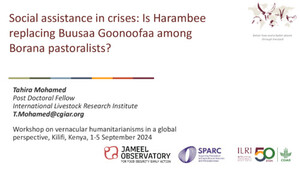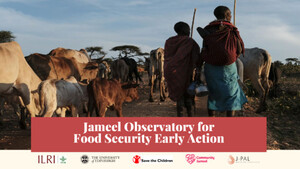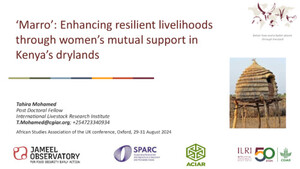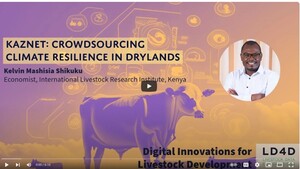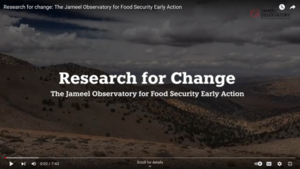
An integrated agro-ecosystem and livelihood systems approach for the poor and vulnerable in dry areas
Abstract
More than 400 million people in the developing world depend on dryland agriculture for their livelihoods. Dryland agriculture involves a complex combination of productive components: staple crops, vegetables, livestock, trees and fish interacting principally with rangeland, cultivated areas and watercourses. Managing risk and enhancing productivity through diversification and sustainable intensification is critical to securing and improving rural livelihoods. The main biophysical constraints are natural resource limitations and degradation, particularly water scarcity and encroaching desertification. Social and economic limitations, such as poor access to markets and inputs, weak governance and lack of information about alternative production technologies also limit the options available to farmers. Past efforts to address these constraints by focusing on individual components have either not been successful or are now facing a declining rate of impact, indicating the need for new integrated approaches to research for development of dryland systems. This article outlines the characteristics of such an approach, integrating agro-ecosystem and livelihoods approaches and presents a range of empirical examples of its application in dryland contexts. The authors draw attention to new insights about the design of research required to accelerate impact by integrating across disciplines and scales.
Citation
Ginkel, M. van, Sayer, J., Sinclair, F., Aw-Hassan, A., Bossio, D., Craufurd, P., Mourid, M.E., Haddad, N., Hoisington, D., Johnson, N., Velarde, C.L., Mares, V., Mude, A., Nefzaoui, A., Noble, A., Rao, K.P.C., Serraj, R., Tarawali, S., Vodouhe, R. and Ortiz, R. 2013. An integrated agro-ecosystem and livelihood systems approach for the poor and vulnerable in dry areas. Food Security 5(6): 751-767






